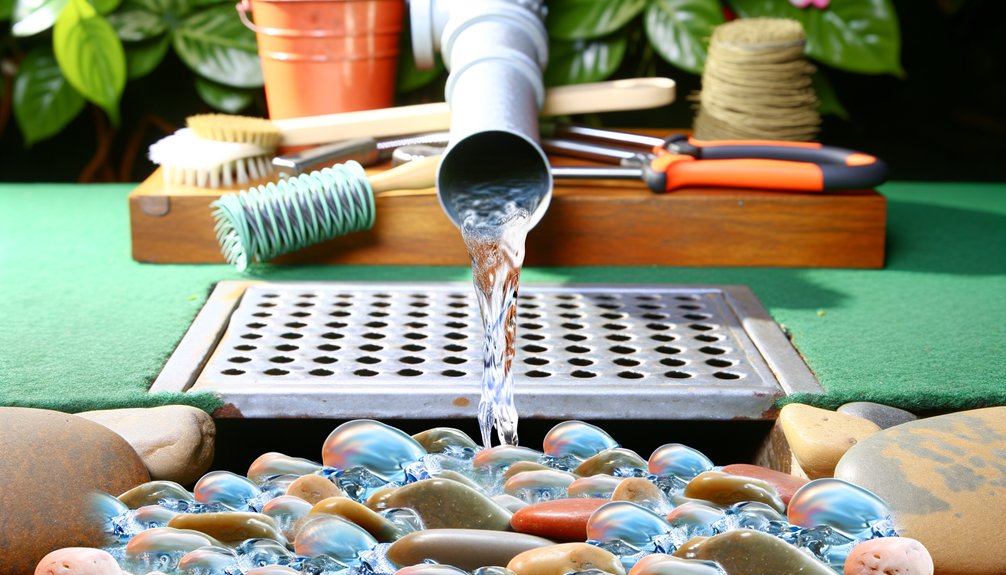Prioritizing preventative drain cleaning maintenance is essential for ideal plumbing performance. It helps extend the lifespan of plumbing systems, reduces repair costs by approximately 30%, and enhances drainage efficiency. Regular maintenance eliminates foul odors, prevents blockages, and mitigates the risk of severe issues like sewage backups. Proactive steps, such as annual inspections and cleaning, foster timely interventions that can save homeowners significant money in the long run. Discover additional insights on effective maintenance strategies.
The Benefits of Preventative Drain Maintenance

Although many homeowners may overlook the importance of preventative drain maintenance, the benefits are considerable and far-reaching. Regular preventative maintenance, including scheduled drain cleaning services, greatly extends the lifespan of plumbing systems by minimizing wear and tear caused by debris buildup and clogs. High-powered water jetting, employed during these maintenance procedures, effectively clears drains and enhances drainage speed, thereby preventing future blockages. Proactive maintenance can also lead to considerable cost savings, with homeowners potentially reducing plumbing repair expenses by an estimated 30% by addressing minor issues before they escalate. Additionally, routine inspections and cleanings eliminate foul odors by flushing away trapped food particles and soap scum, which fosters bacteria growth. Ultimately, prioritizing drain maintenance reduces the risk of serious plumbing issues, such as sewage backups, safeguarding both health and property.
Signs That Drain Cleaning Is Needed
How can homeowners discern when their drains require cleaning? Key indicators include slow drainage in sinks or toilets, which may signal the onset of a clog. Unpleasant odors from drains often suggest trapped debris that can worsen if neglected. Additionally, frequent backups or overflows in plumbing fixtures are unmistakable signs of underlying issues that necessitate professional intervention to avert property damage. Homeowners should also be vigilant for visible buildup or gunk around drain openings, serving as a warning that regular cleaning is essential for ideal drainage performance. Changes in water flow, such as gurgling sounds or fluctuating levels, can indicate blockages forming within the pipes. Recognizing these signs is important for homeowners to take proactive measures to clean their drains, enabling them to prevent future clogs and maintain effective drainage systems as a critical maintenance task.
Taking Action for Preventative Maintenance

Taking proactive measures for preventative maintenance is essential for homeowners aiming to preserve the integrity of their plumbing systems. Scheduling preventive drain cleaning at least annually greatly reduces the risk of drain clogs and costly plumbing emergencies. Consultation with qualified technicians allows for thorough assessments of pipe conditions, identifying potential issues early and facilitating timely interventions. The implementation of camera snaking during maintenance offers a detailed view of the internal health of sewer pipes, enabling targeted solutions to any existing problems caused by organic material buildup. Establishing a tailored maintenance plan based on usage patterns and expert recommendations guarantees that drains remain free-flowing and efficient. By taking action for preventative maintenance, homeowners not only enhance drainage performance but also extend the longevity of their plumbing systems, ultimately leading to considerable financial savings over time. Additionally, regular maintenance of sewage ejector pumps is vital for proper pump functioning, ensuring safe waste removal and preventing potential damage to the home.
Frequently Asked Questions
Why Is Drainage Maintenance Important?
In a hypothetical scenario, a homeowner neglects drainage maintenance, resulting in severe clogs that disrupt water flow and lead to plumbing issues. Such neglect can escalate maintenance costs and diminish property value. Regular drainage maintenance is essential for clogs prevention, minimizing health risks from stagnant water, and eliminating foul odors. Additionally, it addresses environmental impact through effective wastewater management, aligning with homeowner responsibilities to maintain a functional and hygienic living space.
Why Is It Important to Clean Drains Regularly?
Regular drain cleaning is essential for maintaining peak drain health and ensuring efficient water flow. By prioritizing clog prevention through a maintenance schedule, homeowners can mitigate plumbing issues and enhance home safety. Routine cleaning not only results in significant cost savings by avoiding costly repairs but also minimizes the environmental impact associated with blockages. Employing DIY tips or seeking professional services can effectively maintain drains, preserving their functionality and longevity.
What Is the Best Preventive Drain Maintenance?
Like a well-tuned orchestra, effective preventive drain maintenance harmonizes various elements for ideal water flow. Incorporating drain cleaning into a regular maintenance schedule, homeowners can utilize DIY methods such as boiling water treatment and enzymatic cleaners. Seasonal checks and installing drain screens enhance clogs prevention, supporting overall drain health. Additionally, engaging professional services guarantees thorough inspections, ultimately leading to significant cost savings and extending the plumbing system's lifespan.
Which of These Is an Important Safety Concern When Working With Drain Cleaning Machines?
An important safety concern when working with drain cleaning machines includes the adherence to safety precautions during equipment handling and machine operation. Proper training requirements must be established to mitigate risks such as personal protective equipment use for injury prevention. Awareness of chemical exposure and electrical hazards is critical, alongside following maintenance guidelines and emergency procedures. Regular inspections enhance operational safety, minimizing potential malfunctions and ensuring a secure working environment.



